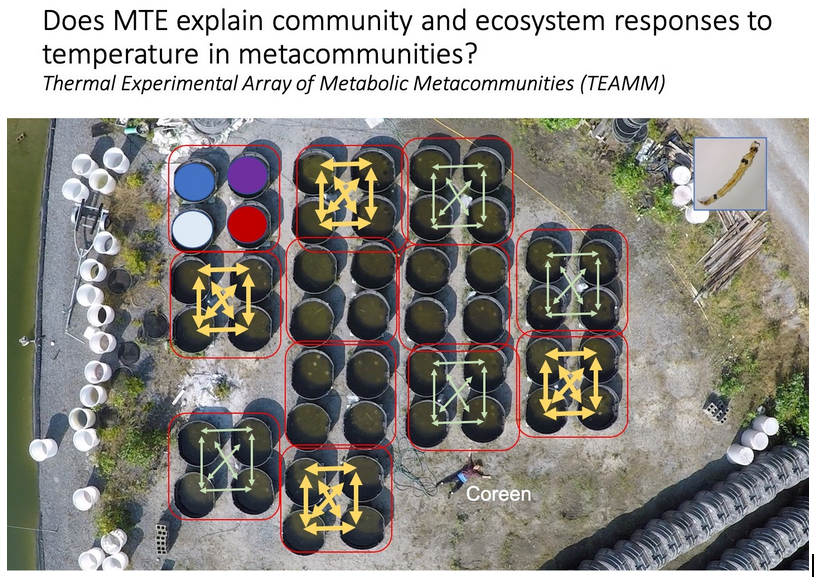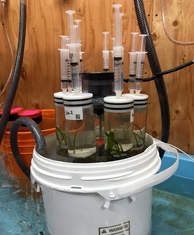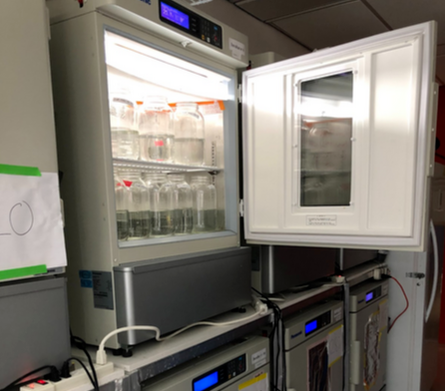Understanding a warming world from ecological first principles
Thermal ecology and the Metabolic Theory of Ecology
Scaling-up respiration rates from individuals to populations & communities
|
The metabolic theory of ecology (MTE) makes reasonably accurate predictions about how biological rates change with temperature in individual organisms, however other ecological processes may modify these predictions when trying to predict the influence of temperature on processes occurring at higher scales of biological organization (i.e. population growth rates, total community photosynthesis or respiration). Lab members use a combination of theory, lab experiments, field experiments, and observational studies to “scale up” predictions of MTE. Some main focus area include:
|
Biological nitrogen fixation and its dependence on temperature
|
Nitrogen fixation is a highly conserved metabolic process that links ecosystem function with nutrient availability. Like all metabolic rates, nitrogen fixation rates are very sensitive to temperature. We consider how the temperature dependence of nitrogen fixation may lead to broad scale ecosystem shifts over latitudes and with climate change. We also use ecological theory (MTE and coexistence theory) to model the interactive effects of temperature and nutrient availability on photosynthetic community structure and function.
|
Life history traits and body size change with warming
|
Thermal ecology of host-parasite systems
|
Increasing temperatures and more variable thermal regimes are altering host – parasite dynamics around the globe. The complex nature of temperature – disease relationships has led to a call for general frameworks to help us better predict outcomes in often data-poor host – parasite systems, and the MTE provides one promising potential framework. Lab members use mathematical models of parasite spread, often tied together with models from the MTE, to try to understand how warming temperatures are likely to impact host – parasite systems and the resulting burden of infectious disease across biological systems.
|


